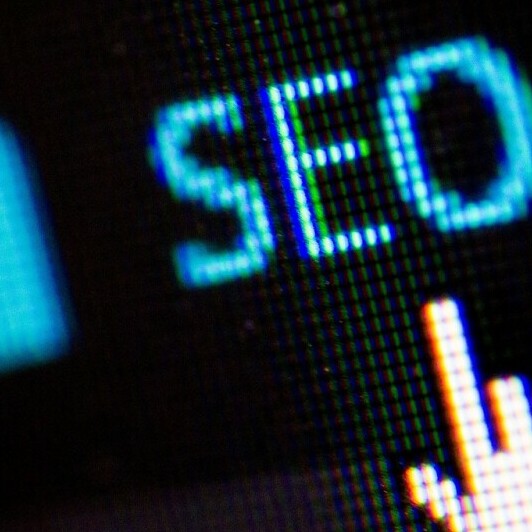
If you’re a web designer, you know that a visually appealing website isn’t enough to stand out online. SEO for web designers plays a crucial role in ensuring your designs not only catch the eye but also attract the right audience consistently. Imagine creating a masterpiece that hardly anyone gets to see. That’s where solid SEO strategies come into play.
Designing with SEO in mind from the outset lays the groundwork for any website’s success. It’s not about tweaking content later; it’s about building SEO into the DNA of the site. Think of it as constructing a building with a planned space for every utility: it’s seamless and functional.
Now, responsiveness and mobile-friendliness aren’t just industry buzzwords—they are key parameters that search engines like Google evaluate. Why does that matter? Because the majority of internet users are now browsing on mobile devices. A design not optimized for mobile is like a shop with a ‘Closed’ sign for these users.
The player behind all these elements? User experience, or UX. A web designer’s job overlaps significantly with SEO when it comes to UX. The easier and more enjoyable your site is to navigate, the better it’s perceived by search engines. It’s similar to a word-of-mouth recommendation, only it’s coming from search engine algorithms.
In the next section, we’ll explore the tangible steps you can take to weave SEO best practices into the fabric of your designs, enhancing the visibility and effectiveness of your websites from the very first sketch.
On-Page SEO: Best Practices for Web Designers

Let me share crucial steps web designers can take to fuse SEO seamlessly into their work. It all begins with keywords. Identifying the right keywords is as essential as creating aesthetically pleasing designs. These keywords should be subtly integrated into various elements such as image alt texts, headings, and title tags. You don’t need to overdo it; a natural incorporation maintains both readability and SEO integrity.
The structure of a website plays a pivotal role in how search engines understand and rank your content. A clear hierarchy using header tags not only organizes content for readers but also for search engines. Moreover, each page should have a unique meta description that encapsulates the page’s content; think of it as a brief pitch to draw users from search results.
Visual elements can boost engagement, but they need careful consideration from an SEO perspective. Alt tags for images contribute to SEO, offering context to search engines and assisting visually impaired users. When videos and infographics are included, provide a transcript or summary. This ensures that search engines can index the full depth of the content, making it accessible to a wider audience. Remember, your goal is to blend visual flair with functionality, providing a website that both captures attention and ranks well.
Ready for more pointers on boosting your site’s performance? Up next, I’ll guide you through enhancing site speed—a critical factor for both SEO and user experience.
Boosting Site Speed: A Vital SEO Strategy for Web Designers
Site speed is more than a technical detail; it’s a crucial element that touches on how users experience your site. Fast-loading pages can significantly improve user satisfaction and thus contribute to higher SEO rankings as search engines prioritize user experience.
One of the first steps you can take is to optimize your images and multimedia. This means sizing images correctly, using the appropriate file formats, and employing compression techniques without sacrificing quality. Heavy images are one of the common culminators in dragging down site speed.
Besides optimizing media, it’s wise to look at your site’s code. Minimizing the code — removing unnecessary characters, spaces, and comments — can make your files leaner and quicker to load. Employing browser caching where possible allows returning visitors to access pages faster since their browser can retrieve resources from its cache rather than downloading them again.
Don’t overlook the role your web hosting service plays in site speed. The server’s performance can have a direct impact on how quickly your website loads. Invest in reliable hosting that ensures minimal downtime and offers fast server response times.
In transitioning to the next section, it’s apparent that while optimizing for speed, one must also focus on the adaptability of the website across various devices. This approach not only provides a seamless user experience but also supports a mobile-first strategy that search engines, like Google, endorse.
Advanced SEO Techniques for Responsive Web Design

Incorporating advanced SEO techniques into responsive web design isn’t just a trend; it’s an essential part of creating successful online spaces that prioritize both form and function. I emphasize the importance of implementing a mobile-first design approach with an eye on SEO. This method ensures that the design is optimized for the smallest screens first, which aligns with the increasing mobile traffic and the search engines’ preference for mobile-optimized sites. Rethinking design choices, such as whether to use adaptive or responsive design, is also crucial for SEO. Responsive design is typically favored by search engines, but the decision should be informed by individual project requirements.
Site navigation plays a key role in keeping users engaged and reducing bounce rates, which is why it’s critical to create a navigation structure that is intuitive and accessible on all devices. Every click and swipe should lead your visitor closer to their intended goal, contributing to a positive user experience that search engines reward with higher rankings.
Finally, remember that SEO is a constantly evolving field. As a web designer, it’s important to stay informed about the latest trends and algorithm updates. Regular testing and refinement of SEO strategies ensure that your site remains competitive and visible in search engine results. Keeping track of site analytics will help in understanding user behavior and adjusting design elements to better serve the audience and enhance SEO performance.
With diligence and a commitment to ongoing learning, you can bridge the gap between beautiful design and optimized search presence, capitalizing on the opportunities that effective SEO brings to the world of web design.
Create Viral Blog Posts
Sqribble Ebook Creation Software






Hi!
You did a great job of highlighting why both web design and SEO are important. It’s not always about aesthetics, but also about ensuring our designs are discoverable and user-friendly. Building SEO into the fabric of a website from the outset is crucial. It’s like the foundation of a house. I liked your practical tip for on-page SEO – integrating keywords naturally, using header tags effectively and optimizing visual elements. Speed is also very important!
Great job! This post will be useful to many!
– Scott